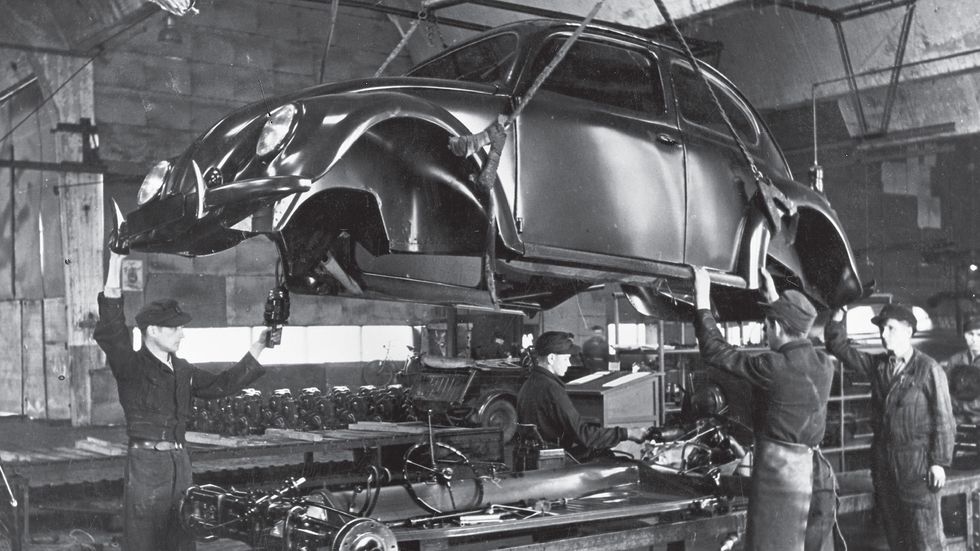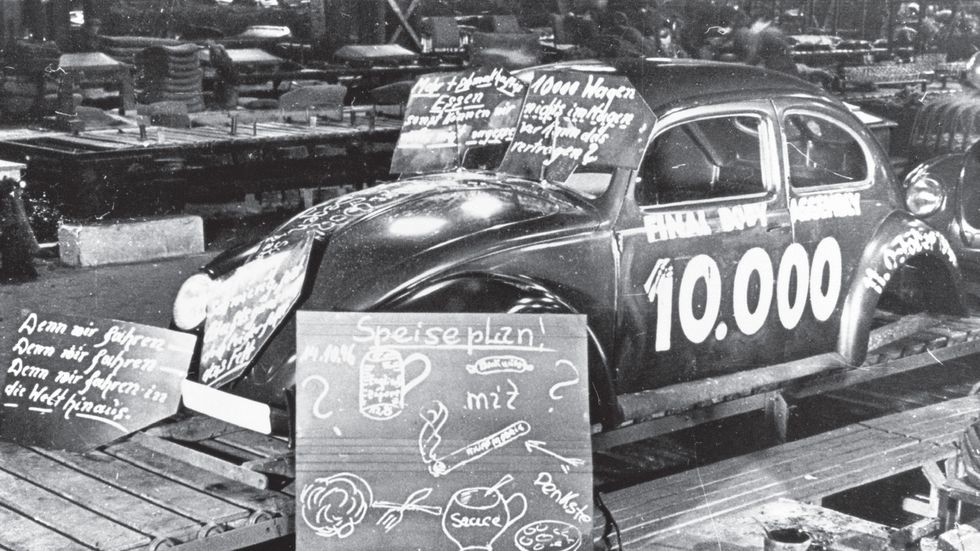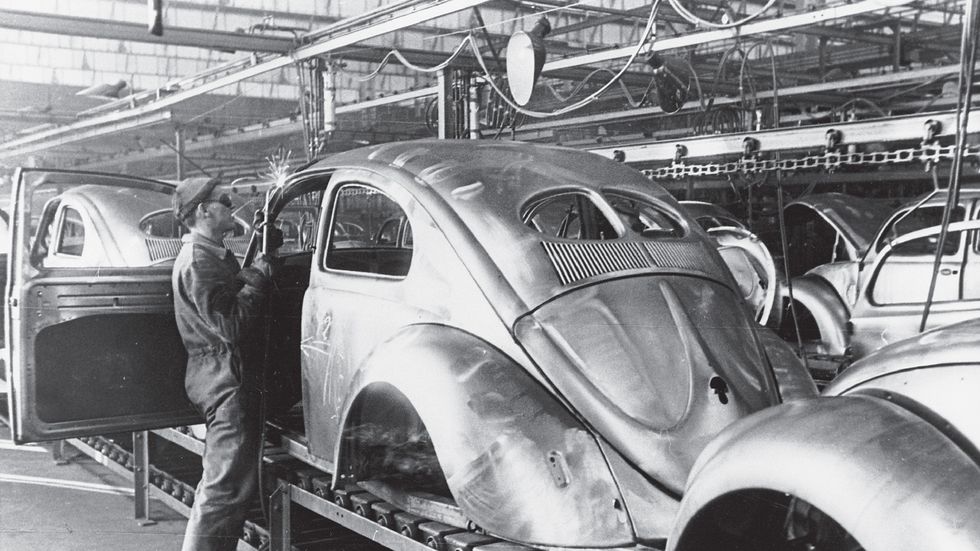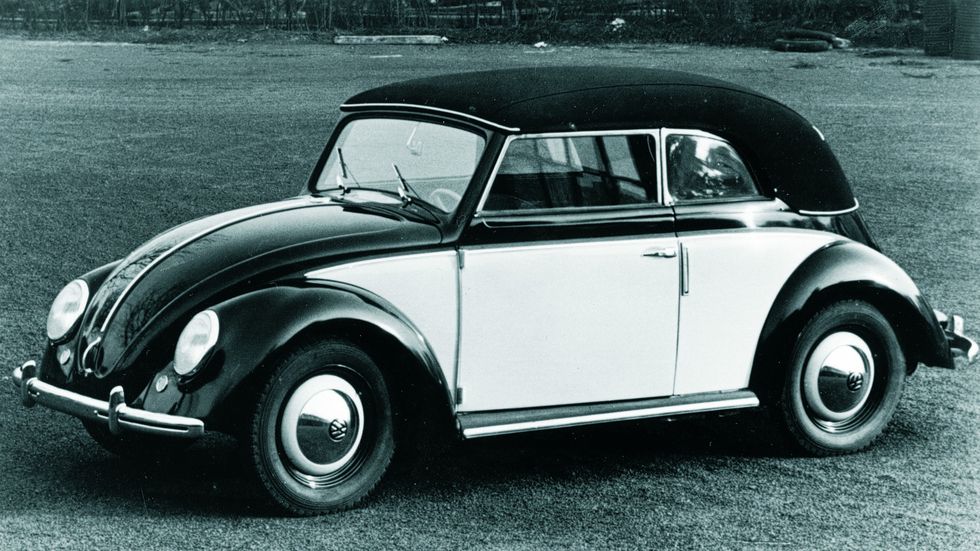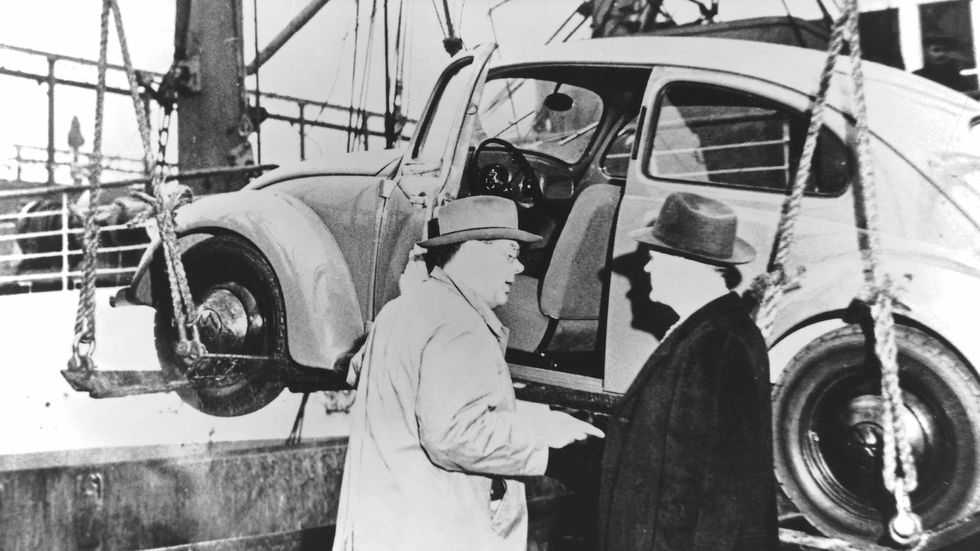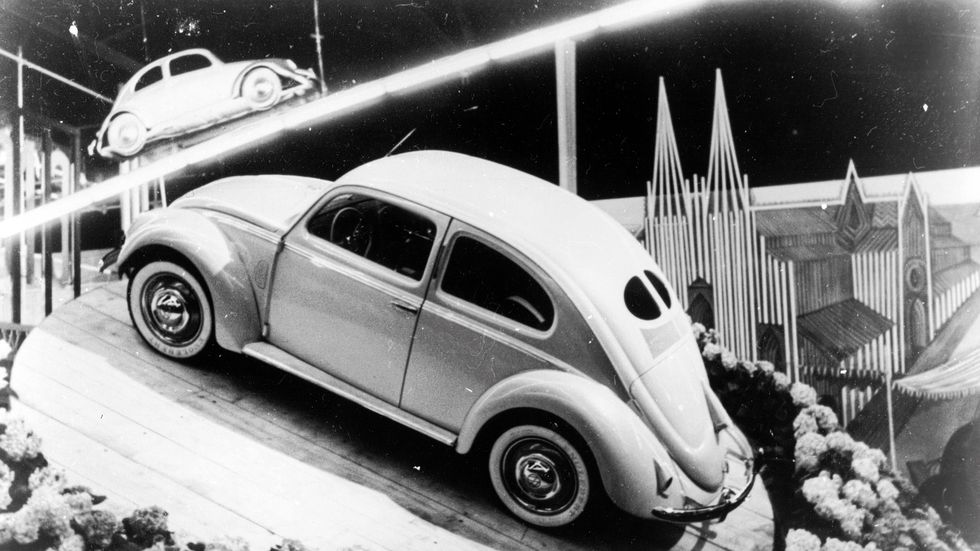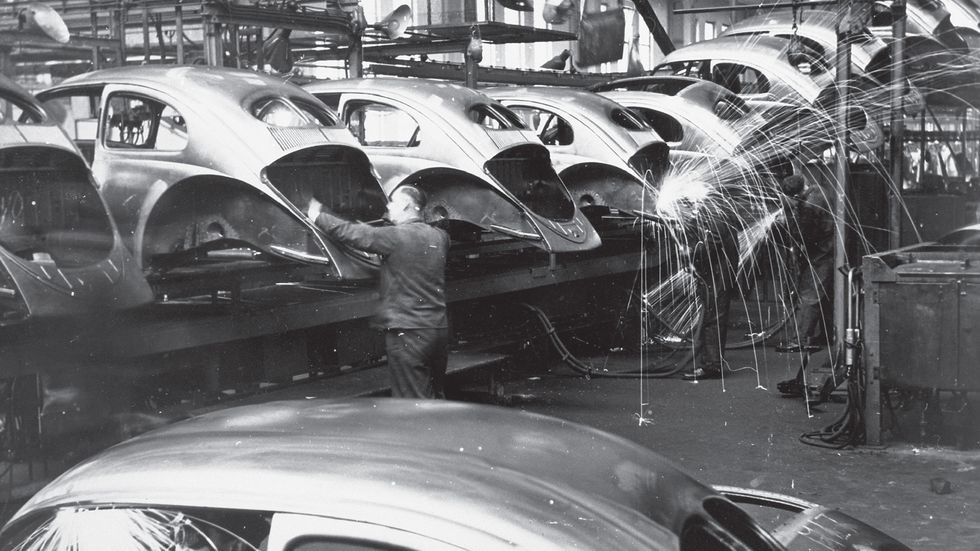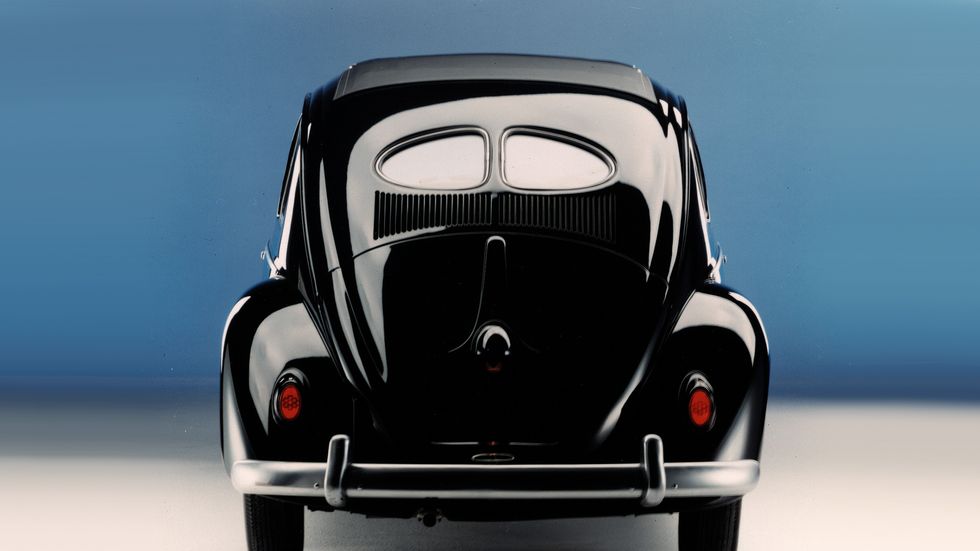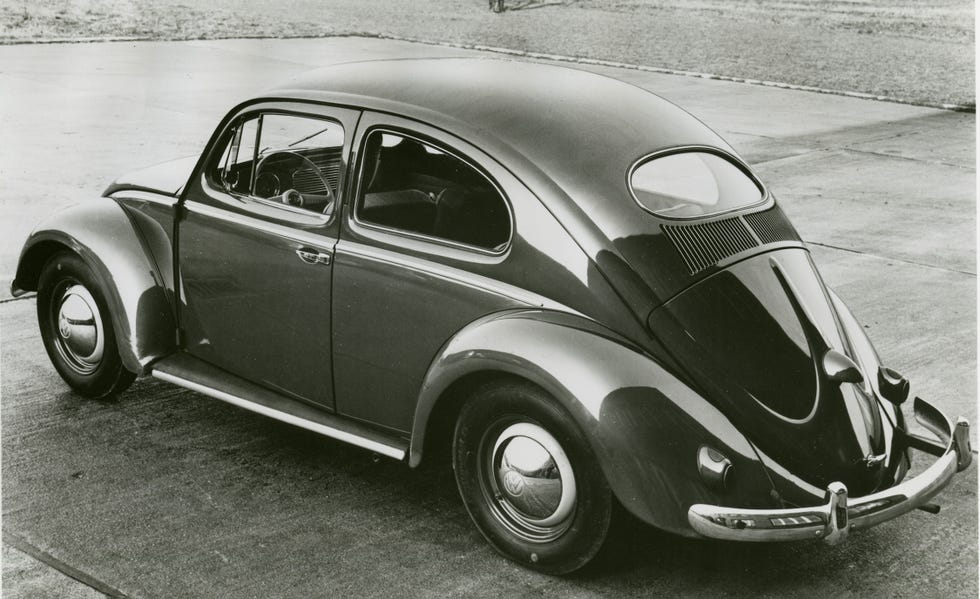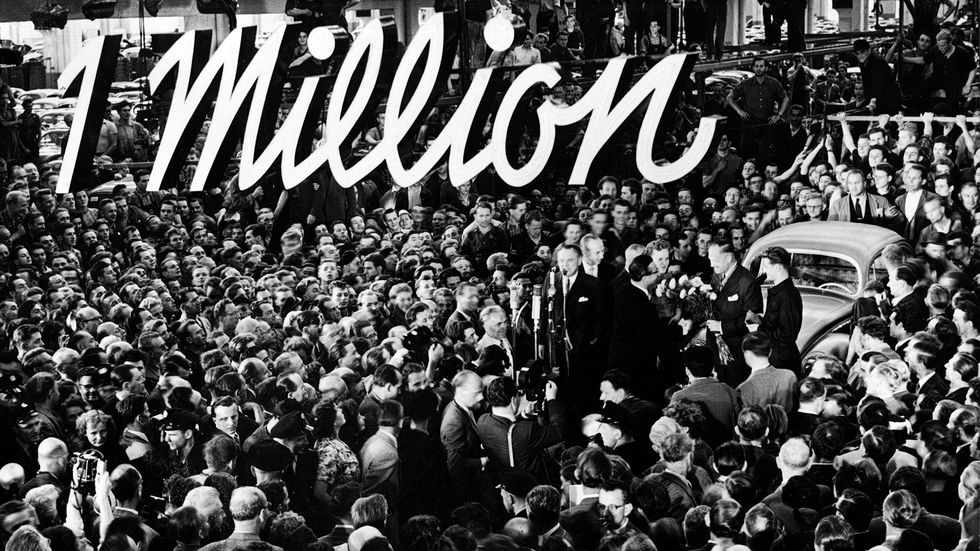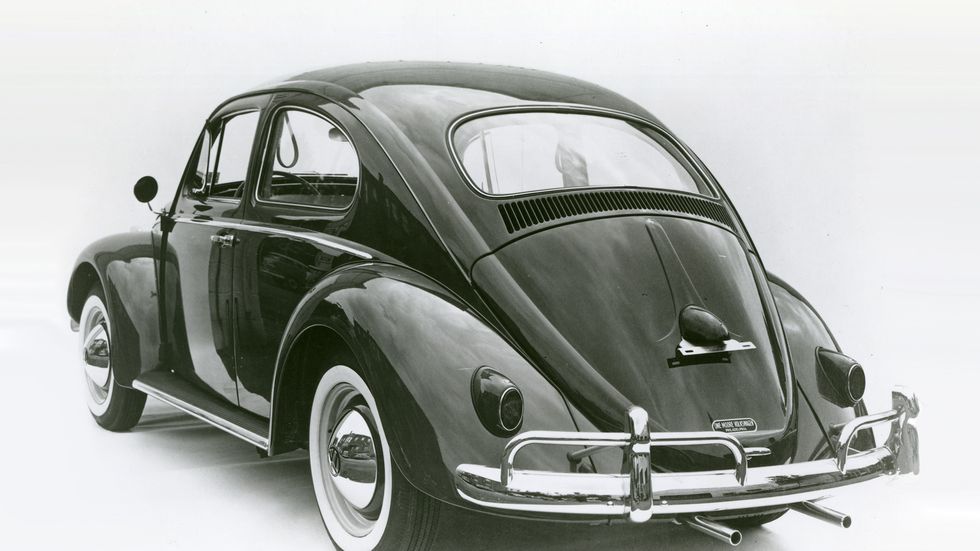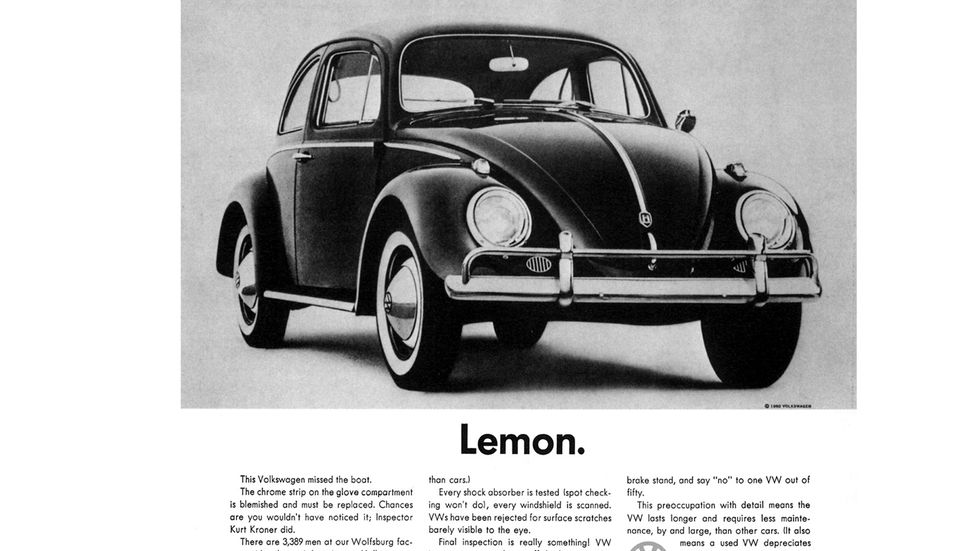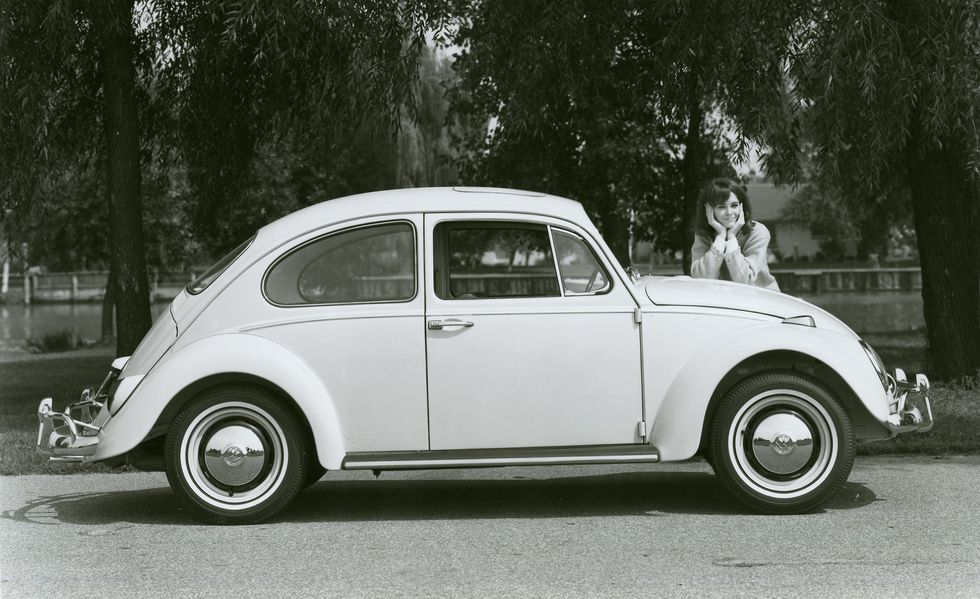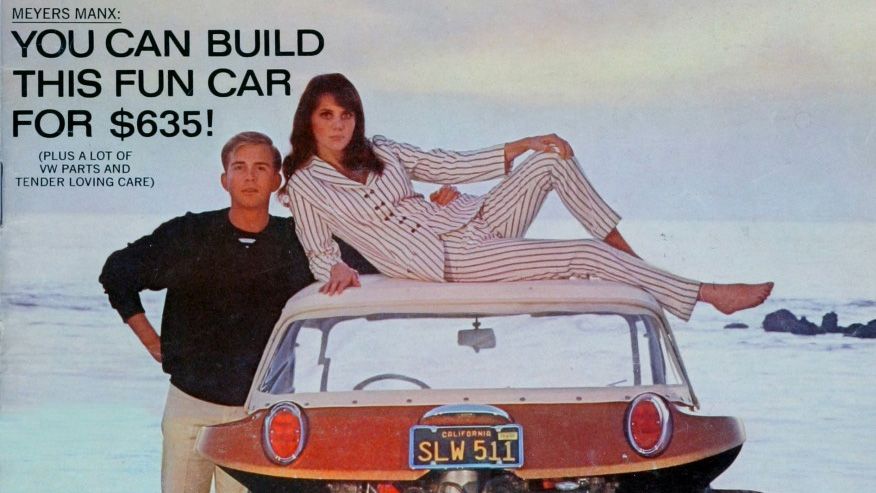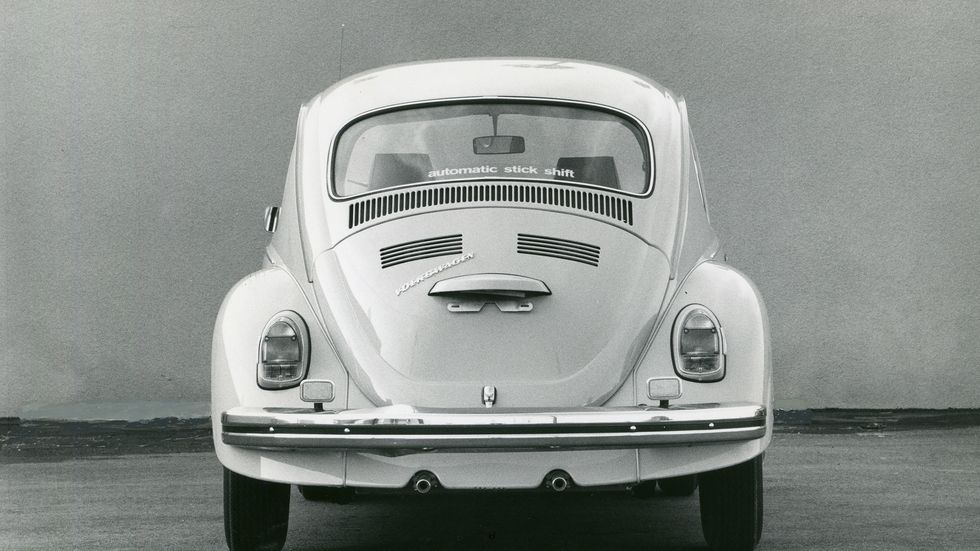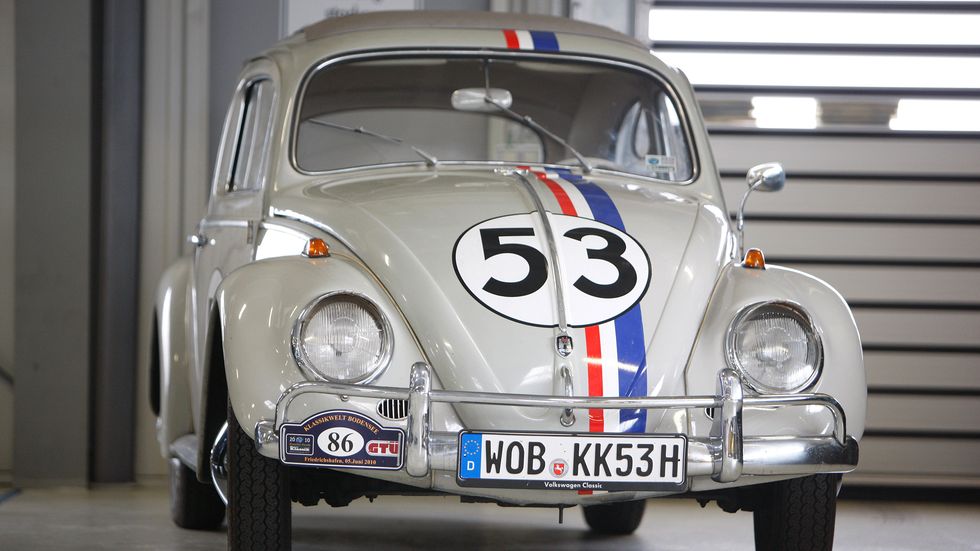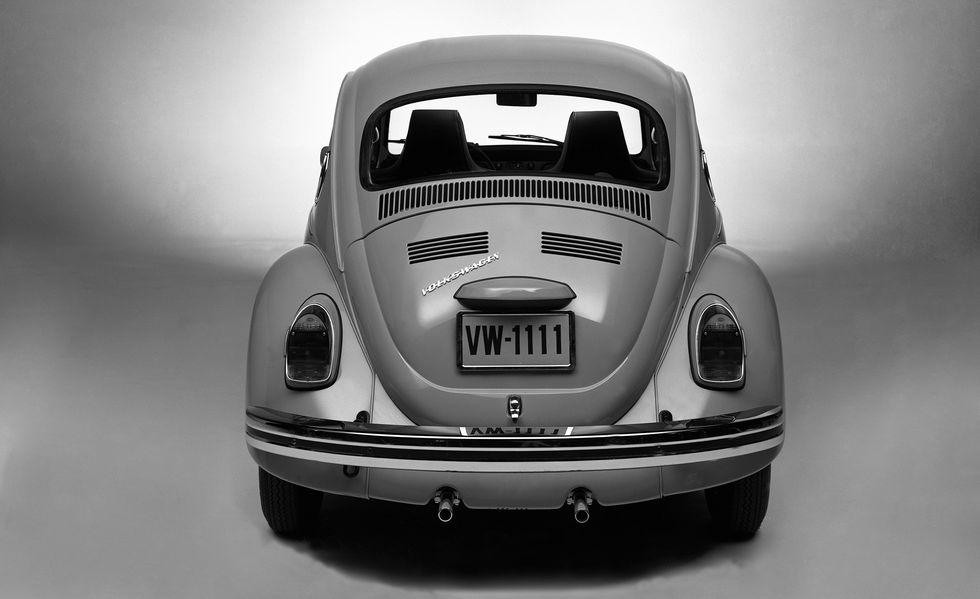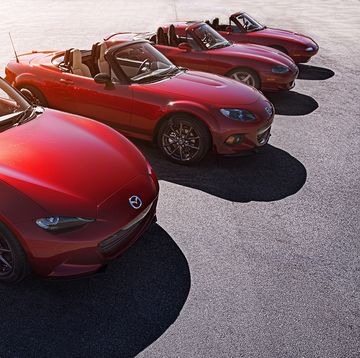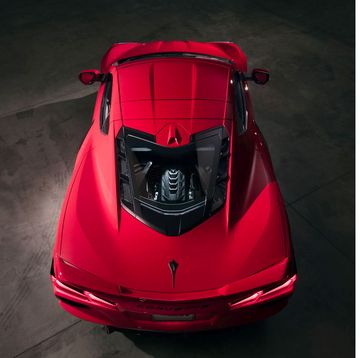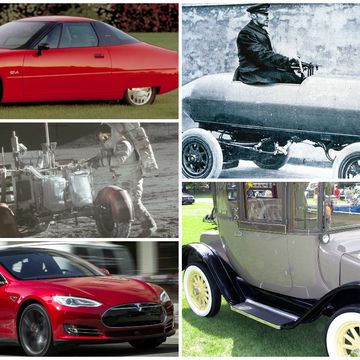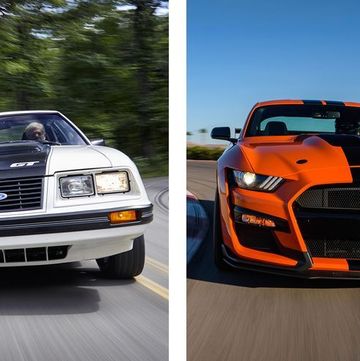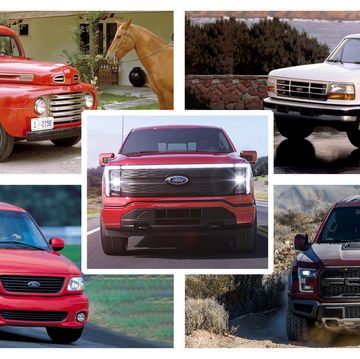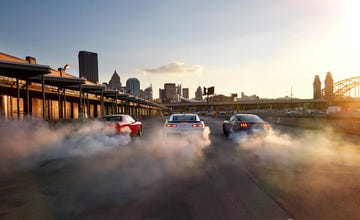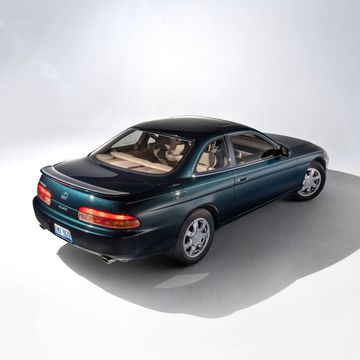The Bug's Life: A History of the Volkswagen Beetle
Volkswagen's Beetle is one of the oldest nameplates in automotive history.

Will Volkswagen bring back the Beetle as an EV? The official line is no, but with a children's cartoon heroine named Ladybug driving what obviously is an electric future Bug, we're thinking the unofficial answer may be yes. The last Beetle was discontinued in 2019, and while the name is dormant, it's one of the oldest and most iconic nameplates.
In the U.S., the Beetle was sold between 1950 and 1979 (under the New Beetle era, from 1998 to 2011 and 2012 to 2019 for the last generation). But the little VW's history stretches all the way back to 1934, when Ferdinand Porsche proposed his design for a "people's car," the Volkswagen, to Adolf Hitler.
The first batch of finalized cars were birthed in 1938, only to see the gleaming new factory built to assemble them pulled into Germany's war effort and later bombed to near oblivion. European civilians wouldn't get their hands on the car until 1947, after production was restarted to provide ground transportation for Allied occupying troops.
U.S. importation grew from a trickle in the early '50s to a flood a decade later, and eventually, 21 million Beetles would be sold worldwide. Even after U.S. sales ceased in 1979, the car continued to be built and sold in Mexico and Brazil until 2003. Over the years, very little about the Beetle changed; it wasn't until 1998 that the car received its first major redesign. For a look at the major events in the Bug's history, continue on.

Clifford Atiyeh is a reporter and photographer for Car and Driver, specializing in business, government, and litigation news. He is president of the New England Motor Press Association and committed to saving both manuals and old Volvos.
Watch Next


The Winningest Cars in 10Best History
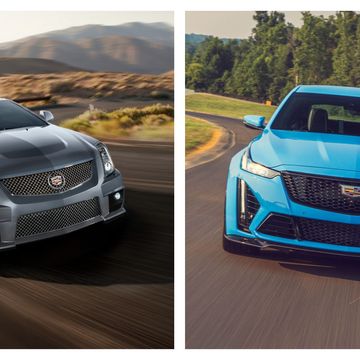
A Brief History of Cadillac's High Performance V
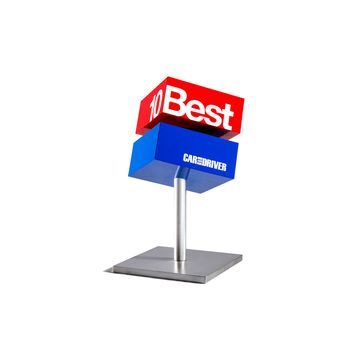
Car and Driver's 10Best Cars through the Decades
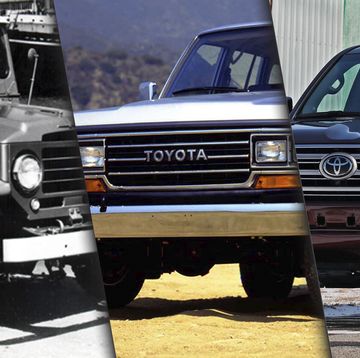
Visual History of the Toyota Land Cruiser
